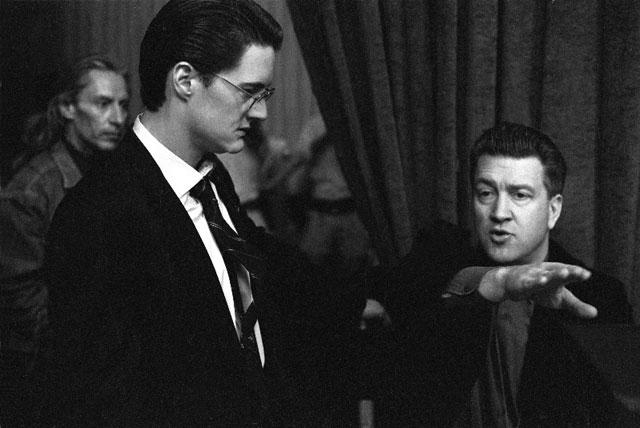
There’s something mind-boggling about watching Twin Peaks all these years later. It’s an easy show to dismiss now; after all, the TV landscape is littered with bizarre characters in even stranger situations. Twin Peaks might not have been the first show to explore the stranger, darker side of seemingly normal characters, but it certainly set the bar for unexpected TV brilliance.
Beginning with the murder of homecoming queen and all around small town princess Laura Palmer (Sheryl Lee), FBI Special Agent Dale Cooper (Kyle MacLachlan) comes to the small logging town where he meets up with Sheriff Harry Truman (Michael Ontkean) and sets about solving the odd murder. At the onset, it looks like a conventional murder mystery. By the time Dale starts having dreams about a red room and a giant who gives him clues about the murder you know that’s very far from being the case.
From episode one there’s nothing normal about Twin Peaks. Dale relies more on gut instinct and Middle Eastern philosophy than actual evidence. The town bad boy, Bobby Briggs (Dana Ashbrook), has a penchant for barking. And then there’s the problem of the distractingly loud mini blinds and identical cousins.

What’s so magical and brilliant about Twin Peaks is the fact that it wasn’t weird just to be weird, like so many shows nowadays. This was a town you wanted to believe existed, you wanted to visit or maybe even live in. It’s just so wonderfully and fearlessly bizarre. David Lynch and co-creator Mark Frost create characters that are allowed to be strange. The writers take their time, and within just one short season they manage to form a world unlike any other television viewers have seen. Lynch and Frost make the choice to treat these characters and odd circumstances as if they were the most normal proceedings in the world. That’s the genius of the show. No matter how strange it gets you can always buy into the situation because the characters do. Dale never once questions the oddity of a town citizen, he just lets them take him wherever he needs to go. The log lady wasn’t a freak, just a citizen, as she helped Dale find clues to the case.
Twin Peaks, for all of its slick cool and quirky charm, ends with one of the most terrifying tailspins into insanity ever captured. It also happens to be an effective examination of good vs. evil. Dale and Harry fight to find Laura’s killer, and ultimately we see Dale slip away in one of the most infuriating cliffhangers of all time.
Like most David Lynch productions, Twin Peaks is really about walls. On the outside, the town is as perfect as Laura Palmer. Once she dies, the cracks start appearing and we get a look inside a complicated and twisted world. Most shows would use Laura’s death as a tool to shock audiences. Although the death is shocking, it wears off and the murder is really used as a launching pad. You begin to question, was everyone in this town always this nuts, or did Laura’s death shock them into realizing their world wasn’t perfect?

The second season, which was far from perfect, helped answer that question, with darkness and evil slowly start to take over the characters we were lulled into believing were innocent and conventional heroes. Even as the show lost its way Twin Peaks forged ahead completely out of control, in a manner not altogether different from its characters. At times, that was when it was the most terrifying.
Twin Peaks was the game changer for network television. It didn’t break rules; it ignored them. The town princess was a drugged out sex fiend, and the bad boy actually turned out to be a romantic. The show was perfect because for two seasons it was run by fearless creators not afraid to celebrate the odder side of life by treating it as if it was perfectly normal.
Tressa Eckermann

